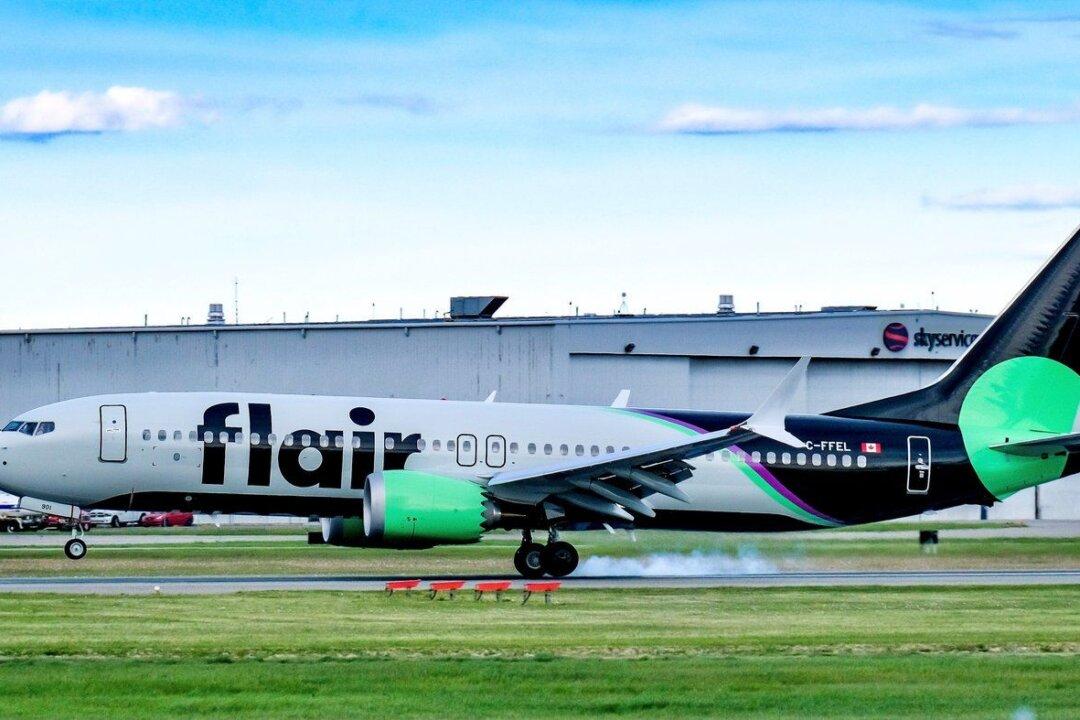Flair CEO Stephen Jones says he’s effectively suspending the budget airline’s expansion plans for at least a year as it contends with plane delivery delays and hefty debts.
“This will be a more muted year,” he said in an interview, “but we’ll look to get back into growth mode strongly in 2025.”
As recently as the fall, the Edmonton-based company aimed to boost its fleet to 26 Boeing 737 Max jetliners in 2024, up from its current roster of 20. On Jan. 29, Mr. Jones said the fleet likely won’t grow much in the coming year, due partly to hold-ups at Boeing CoFlair
The U.S. plane-making giant has faced scrutiny from regulators over its safety record, most recently after a midflight blowout of a side panel earlier this month that grounded 737 Max 9 jetliners for weeks.
Mr. Jones said the Max program has had a number of delays on delivery. Aircraft that were slated to arrive in the spring won’t be landing at Flair’s gates until late fall, “which is not a great time for capacity growth.”
This is a tough industry,“ he said. ”The development of the financial performance will take some time.”
The sum relates to unpaid import duties on the 20 Boeing jets that make up Flair’s fleet, Mr. Jones said.
“We have a plan in place with them for repayment of the outstanding amount,” Mr. Jones confirmed over the phone. The court-issued writ of seizure and sale was a “belt-and-braces arrangement that they put in place if we were to fail on that plan—which we don’t plan on doing,” he added.
While the terms of the deal are confidential, Mr. Jones said it involves monthly payments and characterized the CRA as “understanding.”
The revenue agency said it cannot comment on specific cases for confidentiality reasons, but that it looks to make arrangements with companies “based on their ability to pay” before it takes further steps to recover the money.
“As a last resort, we may take additional legal collection actions such as seizing property or assets to protect the interests of the Crown,” said spokeswoman Kim Thiffault in an email.
The court order from Nov. 23, first reported by The Globe and Mail, allows the “Sheriff of Alberta or any civil enforcement agency” to seize and sell Flair’s property and assets.
It marks the latest chapter in a multi-year struggle to stay solvent and within regulatory lines, as the airline repeatedly crossed paths with the courts.
Last March, Flair saw four of its planes repossessed in the middle of the night after aircraft leasing manager Airborne Capital claimed that the company regularly missed rent payments that amounted to millions of dollars over the preceding five months.
In response, Flair launched a $50-million court action against Airborne and three other leasing firms, arguing that ongoing demands for payment from the four companies were “baseless.”
Flair has touted its achievements in recent months, claiming gains in passenger numbers, the top flight completion rate in the country at 98 per cent and an on-time performance of 69 per cent—weak globally, but solid compared with its Canadian competitors.
But the ultra-low-cost carrier faces increased competition from WestJet—newly retrenched in Western Canada even as the Calgary-based carrier wound down low-cost subsidiary Swoop in October—and from Porter Airlines and budget rival Lynx Air, both of which are expanding swiftly.
A greater focus on sun destinations this winter has also put Flair in direct competition with other airlines that continue to do likewise, including WestJet-owned Sunwing Airlines as well as Air Transat.
“I think Flair is probably in the toughest position of any player in the Canadian marketplace right now,” said Duncan Mr. Dee, former chief operating officer at Air Canada.
He pointed to Flair’s debts and plane seizures as evidence of a struggle to stay afloat.
“The picture that it paints is one where Flair faces much more significant challenges than what would appear on the surface,” Mr. Dee said
Mr. Jones says Flair has been running a smooth operation propelled by high passenger numbers for much of the past year, despite growing pains at the debt-laden company that’s still striving to stabilize its finances and gain consumer confidence.
In 2022, the Canadian Transportation Agency prompted Flair to rejig its board and revoke shareholder rights from top investor 777 Partners in order to comply with rules around domestic ownership.
He cited rates of 18 per cent on loans from 777 Partners, the Miami-based company that owns one-quarter of the airline.
The interest is “non-cash”—no monthly payments required—and merely adds to the principal, he noted last summer. “At some point there will be some form of reckoning, whether it’s a restructure or whatever.”
Meanwhile, a Facebook page dedicated to Flair passenger woes continues to log issues, but features fewer complaints than in mid-2022, when travel chaos descended on a sector unprepared for the surge in post-pandemic flight demand.







